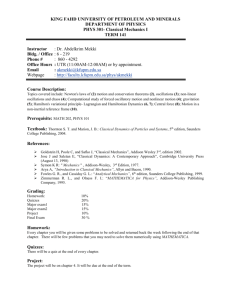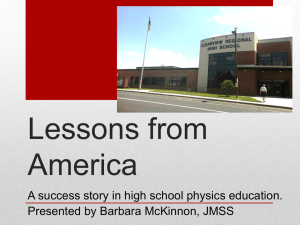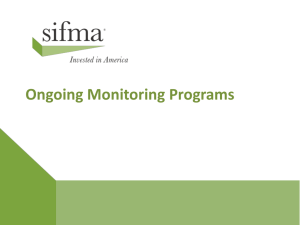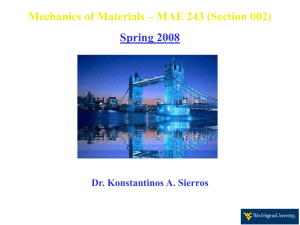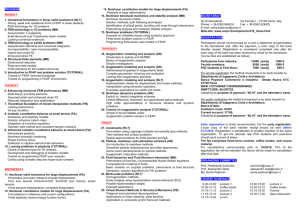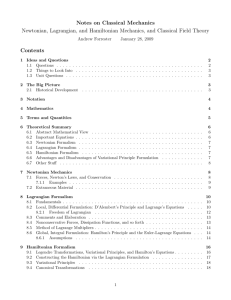151208_analytical_mechanics
advertisement
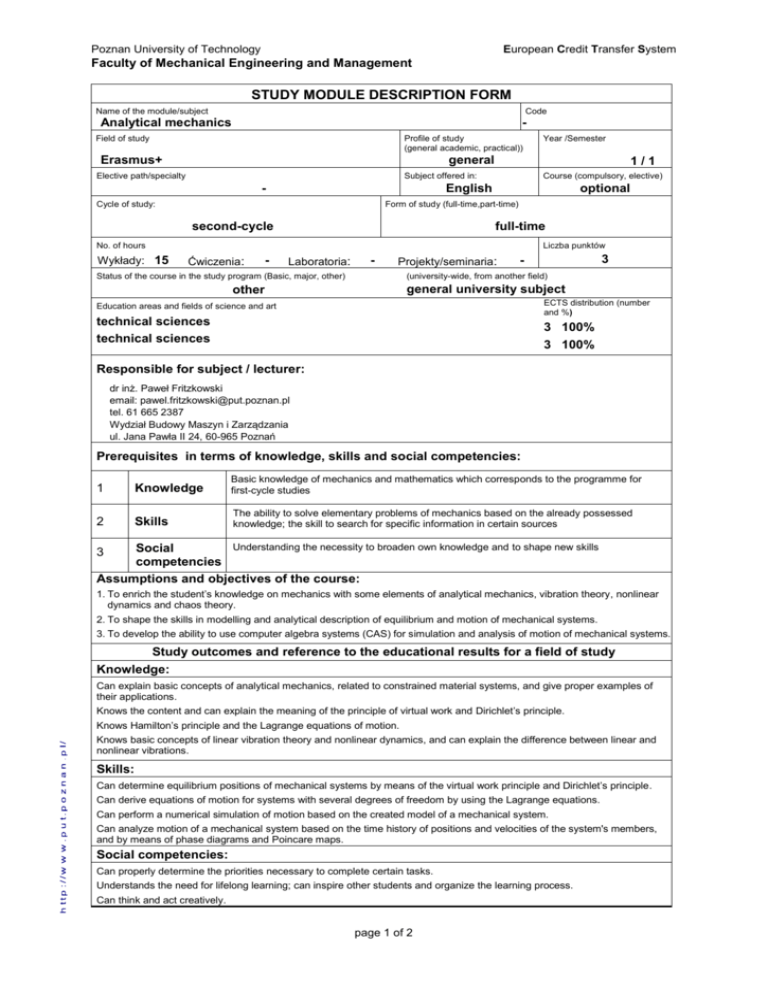
Poznan University of Technology European Credit Transfer System Faculty of Mechanical Engineering and Management STUDY MODULE DESCRIPTION FORM Name of the module/subject Code Analytical mechanics - Field of study Profile of study (general academic, practical)) Erasmus+ general Elective path/specialty 1/1 Subject offered in: - Course (compulsory, elective) English Cycle of study: optional Form of study (full-time,part-time) second-cycle full-time No. of hours Wykłady: 15 Year /Semester Liczba punktów Ćwiczenia: - Laboratoria: - Projekty/seminaria: Status of the course in the study program (Basic, major, other) 3 - (university-wide, from another field) general university subject other ECTS distribution (number and %) Education areas and fields of science and art technical sciences technical sciences 3 100% 3 100% Responsible for subject / lecturer: dr inż. Paweł Fritzkowski email: pawel.fritzkowski@put.poznan.pl tel. 61 665 2387 Wydział Budowy Maszyn i Zarządzania ul. Jana Pawła II 24, 60-965 Poznań Prerequisites in terms of knowledge, skills and social competencies: 1 Knowledge Basic knowledge of mechanics and mathematics which corresponds to the programme for first-cycle studies 2 Skills The ability to solve elementary problems of mechanics based on the already possessed knowledge; the skill to search for specific information in certain sources Understanding the necessity to broaden own knowledge and to shape new skills Social competencies Assumptions and objectives of the course: 3 1. To enrich the student’s knowledge on mechanics with some elements of analytical mechanics, vibration theory, nonlinear dynamics and chaos theory. 2. To shape the skills in modelling and analytical description of equilibrium and motion of mechanical systems. 3. To develop the ability to use computer algebra systems (CAS) for simulation and analysis of motion of mechanical systems. Study outcomes and reference to the educational results for a field of study Knowledge: Can explain basic concepts of analytical mechanics, related to constrained material systems, and give proper examples of their applications. Knows the content and can explain the meaning of the principle of virtual work and Dirichlet’s principle. Knows Hamilton’s principle and the Lagrange equations of motion. Knows basic concepts of linear vibration theory and nonlinear dynamics, and can explain the difference between linear and nonlinear vibrations. Skills: Can determine equilibrium positions of mechanical systems by means of the virtual work principle and Dirichlet’s principle. Can derive equations of motion for systems with several degrees of freedom by using the Lagrange equations. Can perform a numerical simulation of motion based on the created model of a mechanical system. Can analyze motion of a mechanical system based on the time history of positions and velocities of the system's members, and by means of phase diagrams and Poincare maps. Social competencies: Can properly determine the priorities necessary to complete certain tasks. Understands the need for lifelong learning; can inspire other students and organize the learning process. Can think and act creatively. page 1 of 2 Poznan University of Technology European Credit Transfer System Faculty of Mechanical Engineering and Management Assessment methods of study outcomes A written exam consisting of two parts: 1. Theoretical part: 10 close-ended questions (10 total points). 2. Practical part: 2 problems to solve by using computers; each task scored on a scale of 0-5 points (10 total points). Linear grading scale: 90-100% − A; 80-90% − B+; 70-80% − B; 60-70% − C+; 50-60% − C; below 50% − D. Course description Constraints and degrees of freedom. Classification of constraints. Generalized coordinates and generalized velocities. Proper set of generalized coordinates. Generalized forces. Virtual displacements and virtual work. The principle of virtual work. Potential energy, equilibrium and stability. Dirichlet's principle. Configuration, state and evolution of a mechanical system. Hamilton's principle. The Lagrange equations of the second kind. Types of nonlinearities, basic models and specific properties of nonlinear systems. Regular and chaotic vibrations. Bifurcations and chaos in simple dynamical systems. Basic bibliography: 1. Hand L.N., Finch J.D., Analytical Mechanics. Cambridge University Press, 1998. 2. Thornton S.T., Marion J.B., Classical Dynamics of Particles and Systems. Brooks/Cole, 2004. 3. Gutowski R., Analytical Mechanics, PWN, 1979 [in Polish]. 4. Taylor J.R., Classical Mechanics, vol. 1. PWN, 2006 [in Polish]. Additional bibliography: 1. Ott E., Chaos in Dynamical Systems. Cambridge University Press, 2002. 2. Hilborn R.C., Chaos and Nonlinear Dynamics. An Introduction for Scientists and Engineers. Oxford University Press, 2000. 3. Arczewski K., Pietrucha J., Szuster J.T., Vibrations of Physical Systems. Oficyna Wydawnicza Politechniki Warszawskiej, 2008 [in Polish]. Result of average student's workload Time (working hours) Activity 1. Lectures 15 3. Consultations 2 5. Preparing for the exam 15 6. Exam 2 7. Exam summary 1 Student’s workload Source of workload hours ECTS Total workload 35 3 Zajęcia wymagające bezpośredniego kontaktu z nauczycielem 20 1 Zajęcia o charakterze praktycznym 0 0 page 2 of 2



